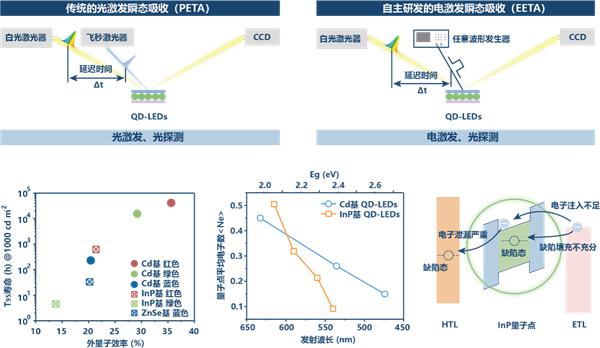Professor Fan Fengjia from the School of Physics at the University of Science and Technology of China and Professor Shen Huaibin from Henan University worked together to use EETA technology to deeply study the key scientific issues of green indium phosphide-based quantum dot light-emitting diodes.

They successfully achieved a peak external quantum efficiency (EQE) of 26.68% for green indium phosphide-based quantum dot LEDs, a brightness of over 270,000 cd/m2, and a T95 (brightness decays to 95% of the starting value) life of 1,241 hours at an initial brightness of 1,000 cd/m2, setting a new world record.
Principle of electrically excited transient absorption and key scientific issues of indium phosphide-based quantum dot LEDs
The latest research by Professor Fan Fengjia and his research team shows that the main reason for the low performance of current green indium phosphide-based quantum dot LEDs is insufficient electron injection and severe electron leakage.
To this end, the research team proposed a "low and wide barrier" design that not only improved the electron injection efficiency but also effectively suppressed the leakage phenomenon. Through this optimization, the research team successfully set a new world record.
The relevant research results were published in the journal Nature under the title "Efficient green InP-based QD-LED by controlling electron injection and leakage", marking an important progress in non-toxic quantum dot LED technology.


